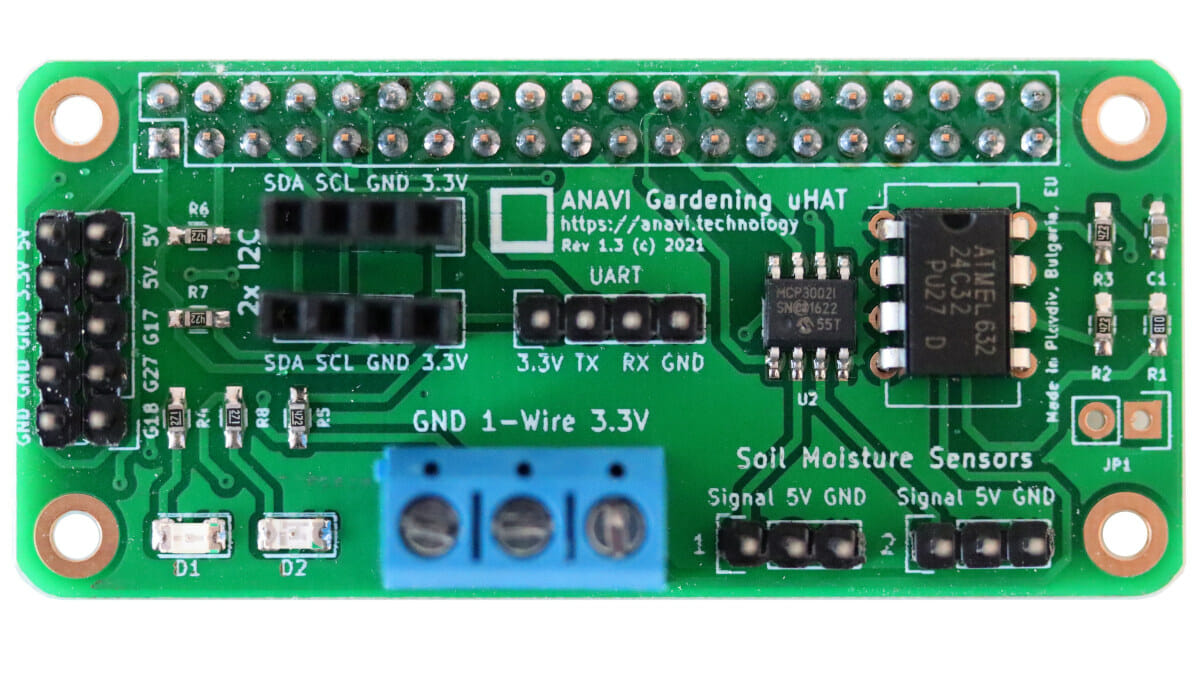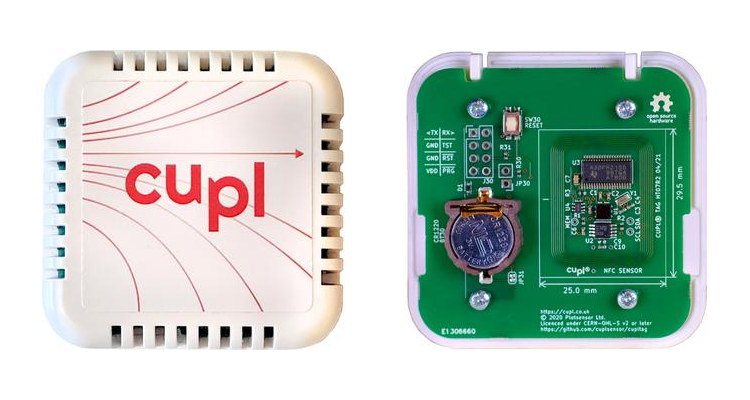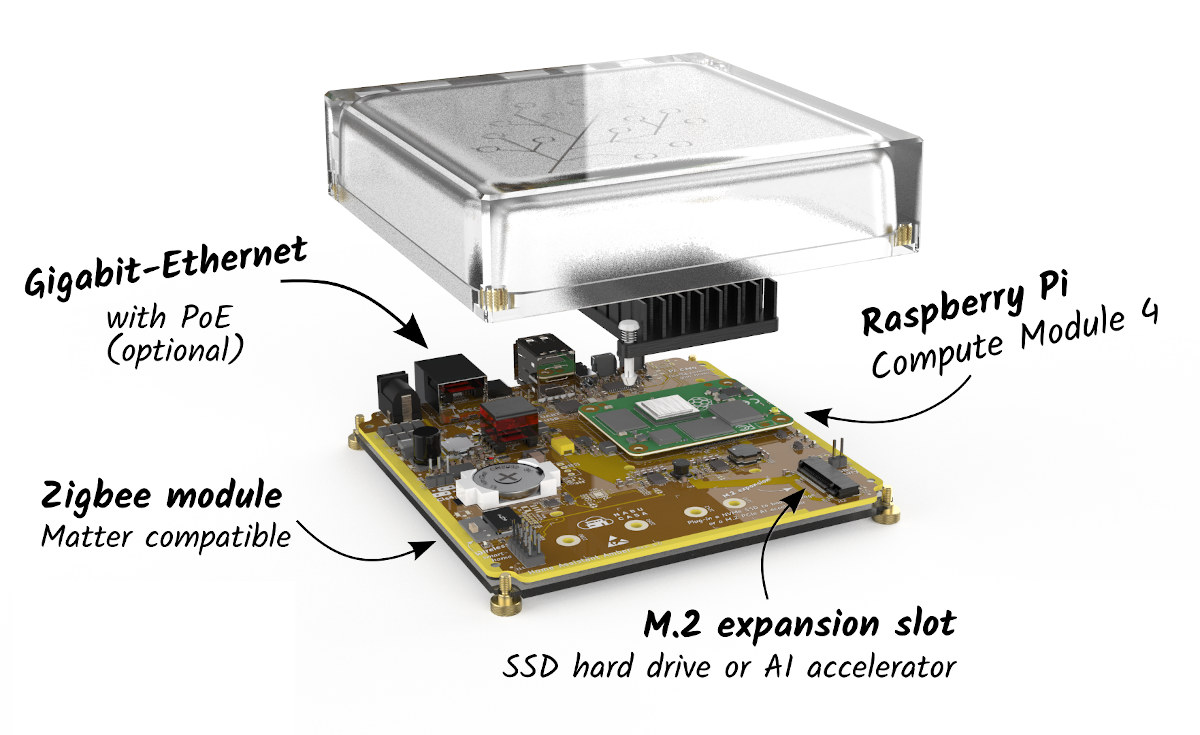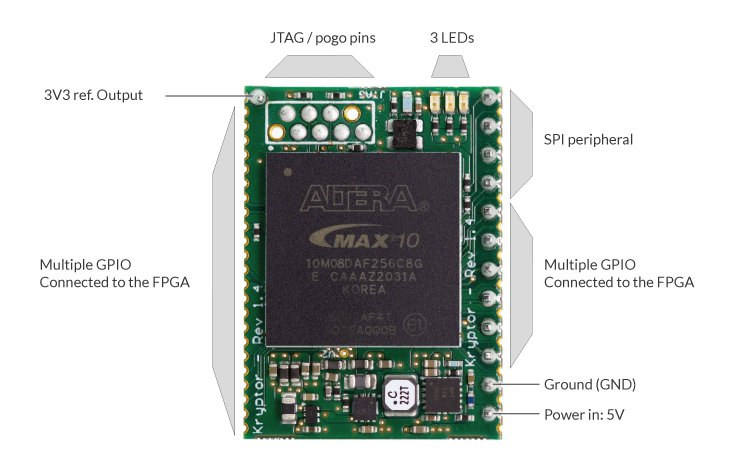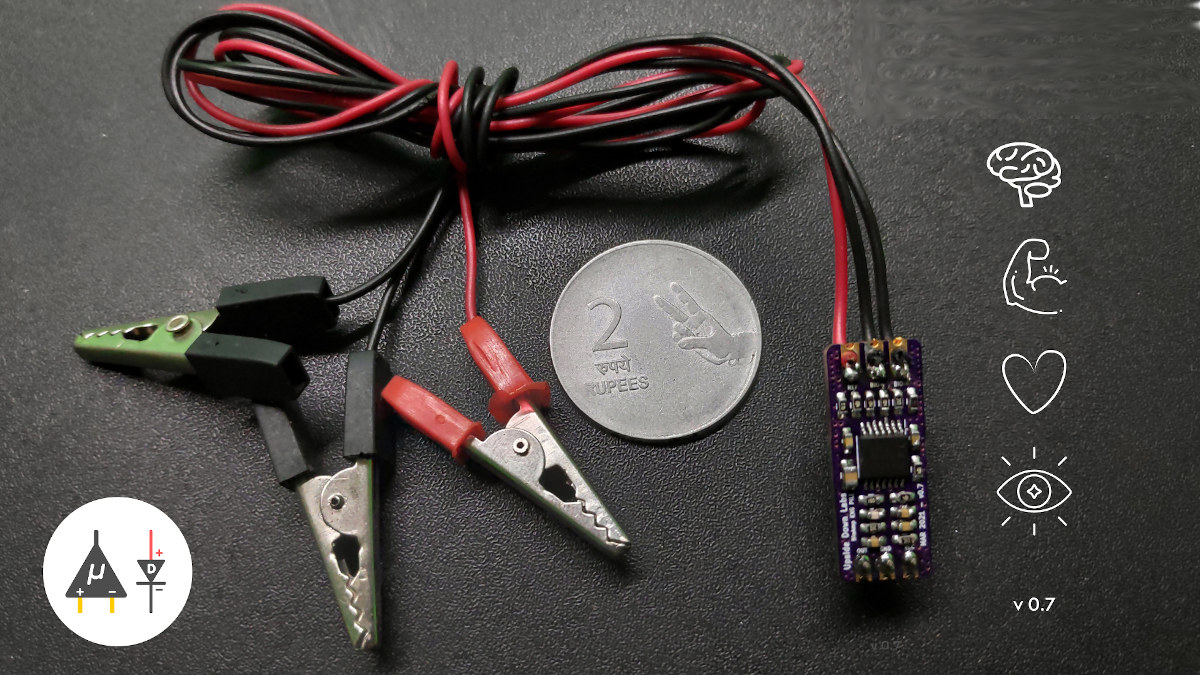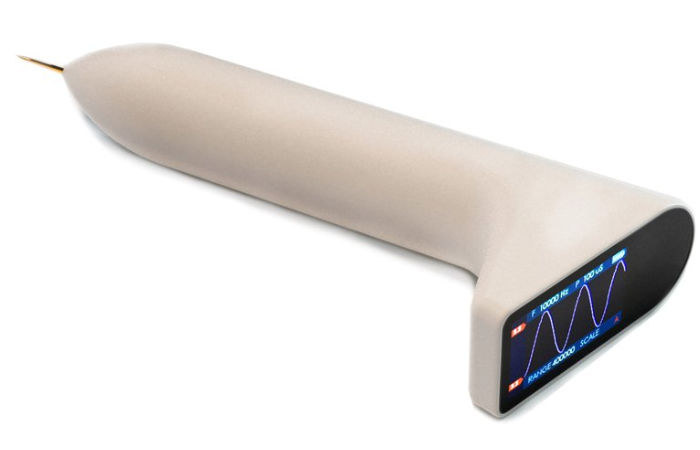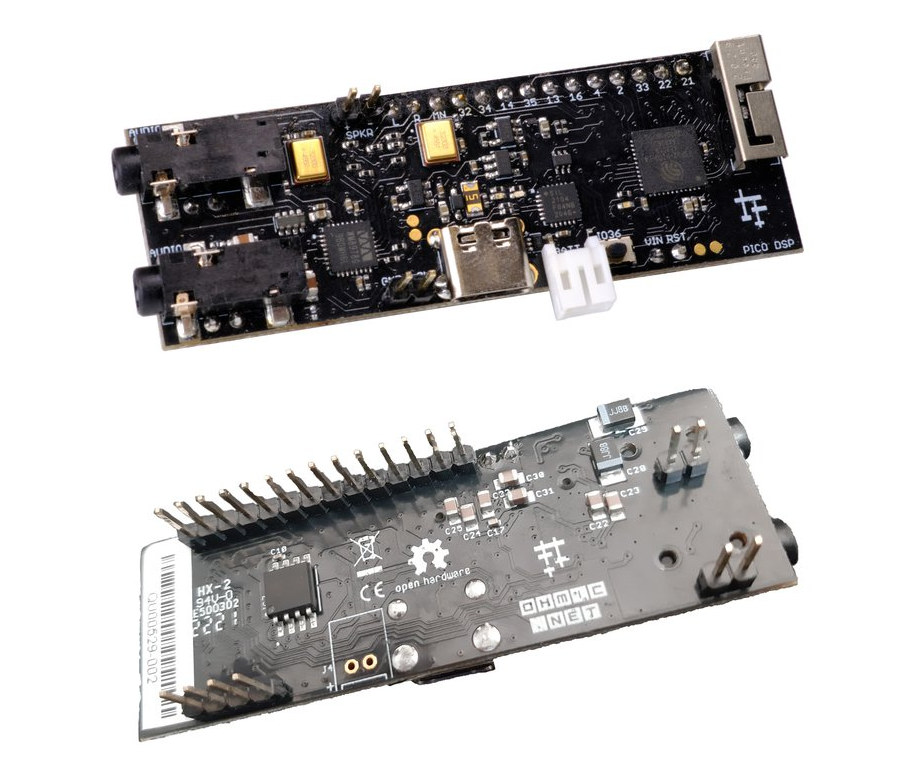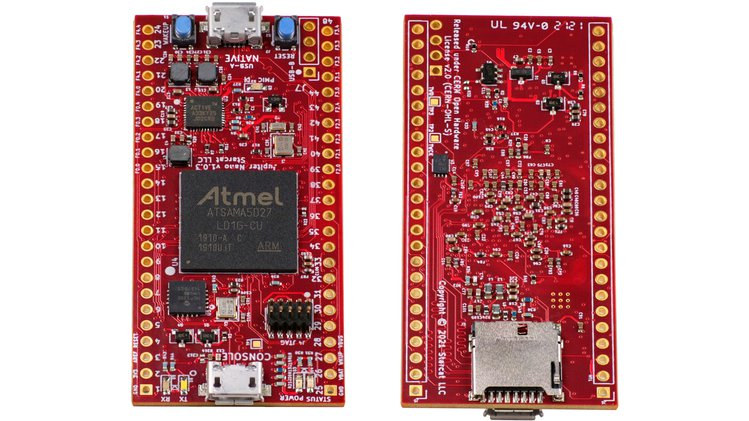We’ve been covering and reviewing ANAVI open-source hardware boards for several years now, either standalone boards based on ESP8266, or add-on boards for Raspberry Pi. The ANAVI Gardening uHAT is the latest board from Leon Anavi. It is a micro HAT designed for Raspberry Pi Zero to Raspberry Pi 4 SBCs that offers interfaces for soil sensors and other environmental sensors allowing measurements of soil moisture, atmospheric pressure and humidity, temperature with a waterproof sensor, and light intensity for gardening applications. ANAVI Gardening uHAT key features and specifications: Compatibility – Any Raspberry Pi board with a 40-pin GPIO header Storage – EEPROM for uHAT compliance 2x 3-pin headers for capacitive soil moisture sensors connected to Microchip MCP3002 ADC chip 3-pin One-wire terminal block for a waterproof temperature sensor 2x 4-pin I²C headers for additional sensors 10-header with GPIO pins for controlling irrigation systems and peripherals Misc – 2x user LEDs, […]
cuplTag battery-powered NFC tag logs temperature and humidity (Crowdfunding)
Temperature and humidity sensors would normally connect to a gateway sending data to the cloud, the coin-cell battery-powered cuplTag NFC tag instead sends data to your smartphone after a tap. CulpTag is controlled by an MSP430 16-bit microcontroller from Texas Instruments which reads and stores sensor data regularly into an EEPROM, and the data can then be read over NFC with the tag returning an URL with the data from the sensor and battery, then display everything on the phone’s web browser (no app needed). cuplTag specifications: MCU – Texas Instruments MSP430FR2155 16-bit microcontroller @ 24 MHz Storage – 2K bytes EEPROM part of NT3H2111 for up to 188 temperature & humidity data points or 376 temperature-only data points Connectivity – Passive NFC, tap-to-read via NXP NT3H2111 NFC tag Sensors – HDC2021 temperature and humidity sensors Measurement interval – 3 minutes to 65535 minutes (Default: 10 minutes) Battery – CR1220 battery […]
Home Assistant Yellow – A Raspberry Pi CM4 based automation gateway (Crowdfunding)
The team behind the popular Home Assistant open-source home automation framework has just launched their second hardware with Home Assistant Yellow automation gateway based on Raspberry Pi CM4 module. This follows last year’s ODROID-N2+ based Home Assistant Blue which was a limited edition and has now been discontinued, albeit still supported. The carrier board for Home Assistant Amber is designed from scratch and notably includes Silicon Labs MGM210P Mighty Gecko Module with support for Zigbee 3.0, OpenThread, and Matter (Soon), as well as M.2 socket that can take an NVMe SSD, or an AI accelerator card. Home Assistant Yellow specifications: Supported SoM – Raspberry Pi Compute Module 4 (CM4) with Broadcom BCM2711 quad-core Cortex-A72 processor @ 1.5 GHz, up to 8GB RAM, up to 32GB storage. (Note: optional WiFI 5 and Bluetooth 5.0 connectivity not covered by regulatory approval) Storage – Support for NVMe SSD via M.2 socket, bootable for […]
Kryptor FPGA – Tiny MAX10 FPGA board works as a hardware security module (Crowdfunding)
Kryptor FPGA, sometimes just called Kryptor, is a compact Intel/Altera MAX10 FPGA development board mostly designed for encryption, and acting as a dedicated Hardware Security Module (HSM) with a custom soft-core from Skudo OÜ. But obviously, you could also use the FPGA board for other purposes. Hardware encryption can be quite more secure than software-based encryption with reduced attack surfaces, especially since data processing can be done in the FPGA RAM. The HSM can be used to encrypt files, videos, emails, IoT messages, etc… from various hardware platforms including Arduino and Raspberry Pi boards. Contrary to closed-sourced commercial solutions, the soft-core is open-source and as such can be verified by third parties to make sure there aren’t any backdoors or security flaws. Kryptor FPGA specifications: FPGA – Intel/Altera MAX10 8K LE ( 10M08DAF256C8G) FPGA @ 100 MHz with 8000 logic elements (LE), 1376 Kb flash, 378 Kb total RAM, up […]
BioAmp EXG Pill board enables ECG, EMG, EOG, and EEG biosensing (Crowdfunding)
BioAmp EXG Pill is a small Analog Front End (AFE) biopotential signal-acquisition board designed to be interfaced to any 5V MCU board with an analog-to-digital converter (ADC) such as most Arduino boards, or through a dedicated 5V ADC like the Texas Instruments ADS1115. The board can record biopotential signals like ECG (electrocardiogram), EMG (electromyography), EOG (electrooculography), and EEG (electroencephalogram), or in more simple terms, biosignals from the heart, muscles, eyes, or brain activity. BioAmp EXG Pill key features and specifications: Compatible with any 5V MCU with an ADC Biopotentials: ECG, EOG, EMG, and EEG (configurable) No. of channels: 1 Electrodes: 2 or 3 (configurable) Input Voltage – 5 – 40 V Input Impedance: > 35 MΩ Dimensions – 25.4 x 10 mm OSHWA certifications – IN000026 The board is open-source hardware and you’ll find KiCAD hardware design files like schematics and Gerber files on Github where you’ll also find several […]
Arduino programmable wireless multitool offers color display, touch controls (Crowdfunding)
QUARK may look like the perfect weapon to hijack a plane, but instead, it’s an open-source, Arduino-based wireless multitool for hardware engineers equipped with a full-color screen and touch-based controls. Based on ESP32 WiFI & Bluetooth wireless SoC, Mulin Group’s QUARK is an ultra-portable multimeter, signal generator and oscilloscope, a bit like IkaScope WiFi Pen-Oscilloscope, except having a laptop or phone to visualize measurements is only optional. The company also compares it to DT71 smart tweezers which do not have an oscilloscope function due to the tiny display. QUARK features & specifications: WiSoC – ESP32 dual-core processor with WiFI & Bluetooth connectivity Display – 240 x 134 IPS display Measurements Voltage – 0 to 26 V Current – 0 to 3.2 A Resistance from 0 to 2 MΩ Capacitance from 2 pf to 1000 uF Inductance up to 1 H Sampling rate for oscilloscope function – 400 ksps Features – […]
PICO DSP is an Arduino compatible ESP32 development board for audio and DSP applications (Crowdfunding)
ESP32 audio development boards have been around ever since ESP32 boards were introduced starting with Espressif Systems’ own “ESP32-LyraTD-MSC Audio Mic HDK“, and now ESP32 hardware and software have been certified for Amazon Alexa Voice Services. PICO DSP is another ESP32 development board for audio and digital signage processing (DSP) applications. Equipped with a Wolfson WM9878 stereo audio codec, the breadboard-friendly, Arduino compatible board includes two MEMS microphones, audio in and out jacks, a speaker header, plus other audio signals routed to a GPIO header. PICO DSP specifications: SiP – Espressif ESP32-PICO-D4 system-in-package with ESP32 dual-core WiFi 4 & BLE processor, 4MB SPI flash External storage/memory Original Edition – External 64 MB pseudo-static (PSRAM) chip, of which up to 8 MB is currently supported by ESP-IDF. Strawberry Edition – 16 MB of external NOR flash (note: the internal 4MB SPI flash will not be usable after selecting the NOR flash […]
Jupiter Nano – Tiny Cortex-A5 board runs Linux or NuttX RTOS (Crowdfunding)
Jupiter Nano looks like one of those small MCU boards, but instead of a microcontroller, it packs a 500 MHz Microchip SAMA5 Cortex-A5 processor with 128MB RAM capable of running Linux or NuttX operating systems. The board reminds me of the Adafruit Feather compatible Giant Board made by Groboards, with the same system-in-package, but Juniper Nano offers more I/Os via 48 through holes, and its size is said to be similar to Teensy 4.1 board (but not quite). Jupiter Nano specifications: SiP – Microchip SAMA5D27C-LD1G with Cortex-A5 processor running at 498 MHz, 128MB LPDDR2 DRAM Storage – MicroSD card socket (bootable) USB – 1x Micro USB 2.0 host/device port, 1x USB 2.0 host on header Expansion – 2x 24-pin headers with GPIOs, USB, SPI, I2C, up to 4x Flexcom interfaces configurable as SPI, UART or I2C Programming – JTAG port, Micro USB 2.0 FS debug console via MCP2200 USB-UART converter […]


